Your cart is currently empty!

Weaning Growth Chart
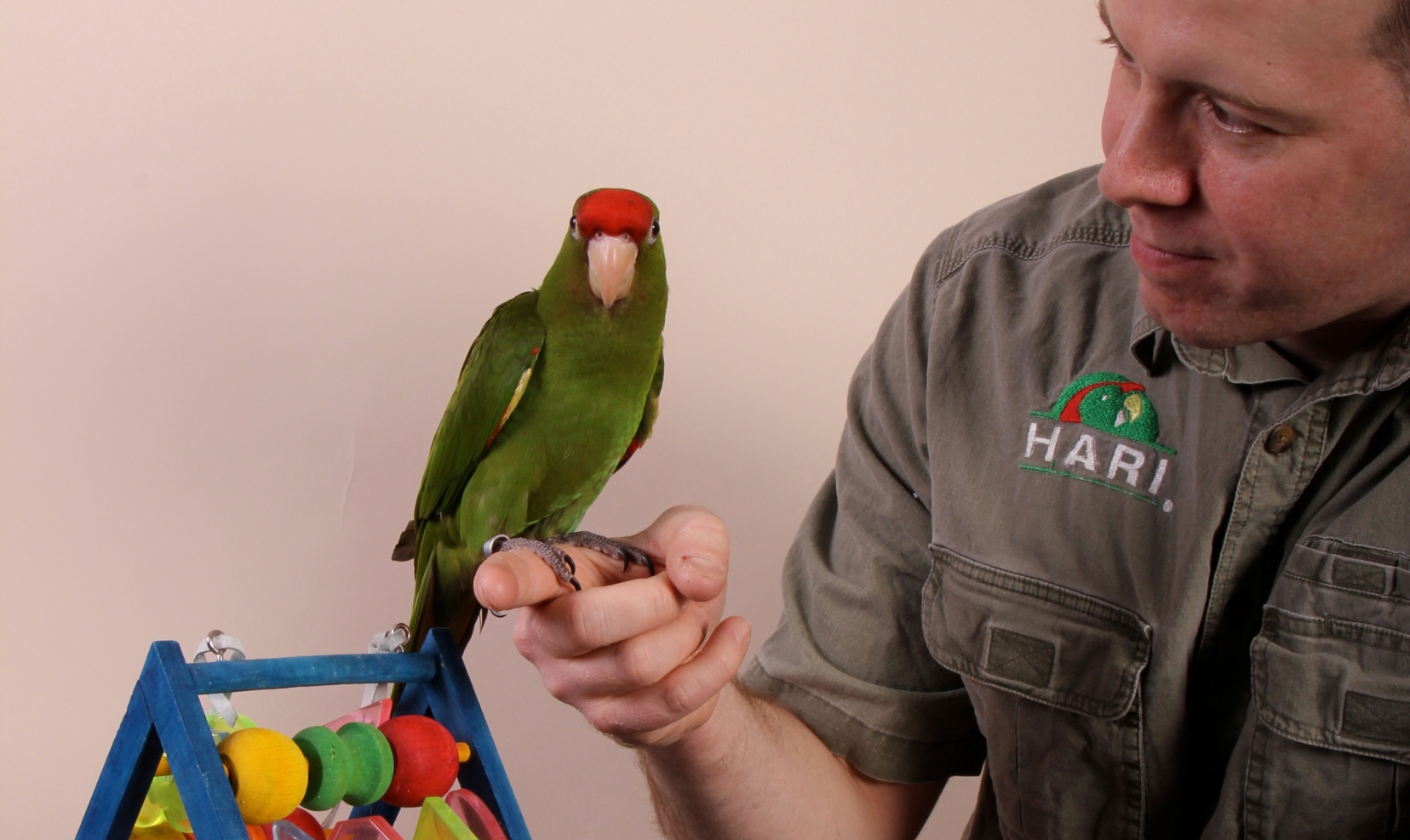
HARI Official Brand Site


Keep track of your chick’s daily weight, physical attributes, feeding habits and primary lessons with this practical lifestage growth chart. It is an excellent tool for communicating with other caretakers and ensuring that everyone is on the same page.
This daily monitoring is crucial to caretakers as the growth pattern will indicate the advancements to the next stage. Once the “plateau stage” is reached in this 1st stage of EPE, the chick growth chart can be replaced with this weaning growth chart to record the weight as no more increase should be expected. It should be said that negative growth patterns (not associated with the expected gradual weaning weight loss) can also indicate a possible medical or nutritional problem. If such is the case, the nursery caretaker can be more proactive in making corrective changes.
Healthy chicks thriving under optimal conditions should have empty crops (ideal for accurate weight assessment) prior to the morning feeding, whereas the crop, although expected to digest its content, may not be completely empty during the rest of the day prior to another feeding session. Emptying a chick’s crop for weighing purposes should be done only if you immediately require an accurate weight for a health assessment or if chicks require their crops to be emptied due to a crop disorder. Techniques used to empty the crop content safely should only be performed by a skilled avian nursery caretaker or avian health professional.
Handling chicks at this age can be challenging as nails are very sharp; these must not, however, be groomed for the caretaker’s convenience! Furthermore, chicks are awkward to pick up due to their large crops, clumsy bodies lacking muscle and strength, resting most of their weight on the upper part of their bodies and so handling can be potentially dangerous for the chicks unless a proper technique is used. Pressure should never be applied to the chicks’ abdomen or upper body region when handling. Chicks should never be rested on slippery surfaces during weighing, physical exams or feeding. Handling should be strategic to minimize handling when the crop is not empty. For example, chicks should be weighed when the crop is empty in the morning then transferred to a clean chick bin and then fed in this respective bin to prevent handling with a full crop.
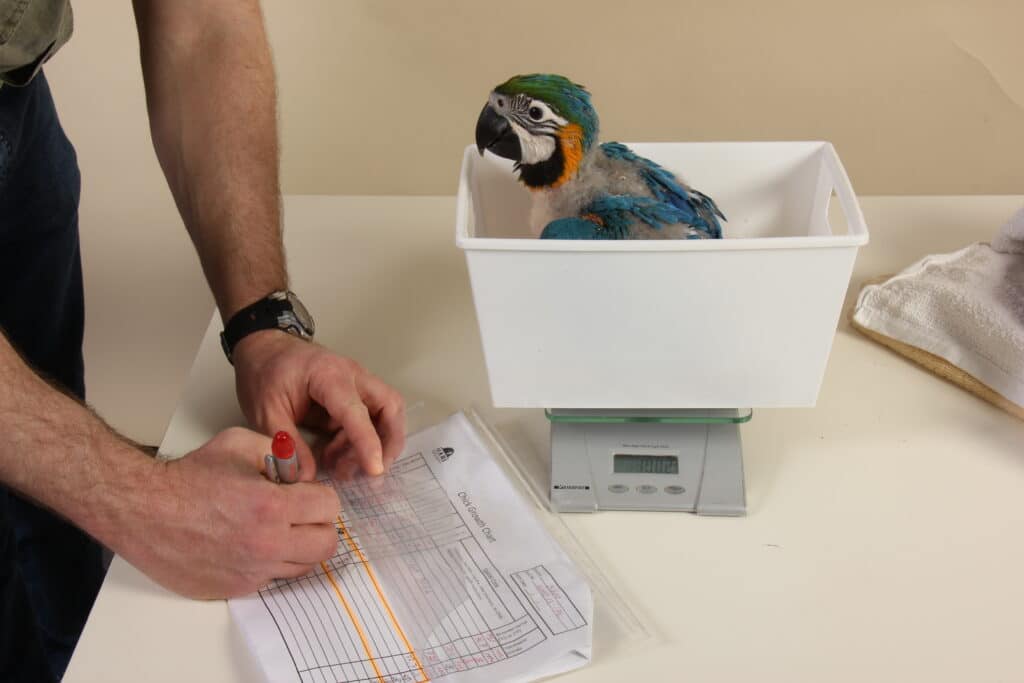
As pre-fledged chicks mature towards the fledgling age, they gain more dexterity and confidence perching, and so a scale perch can gradually be introduced to facilitate weighing.

Weight monitoring is combined with vocal and visual communication to reinforce the understanding of the commands Step-Up & Step down of the scale perch comfortably.

Recording a fledgling’s weight daily is necessary to monitor the weaning progress and evaluate its health status.
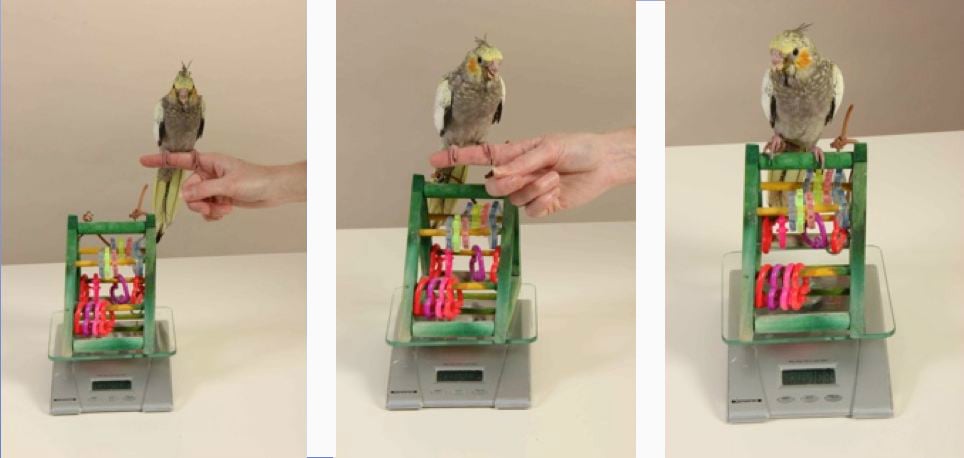
Once the fledgling has successfully reached the 5th stage of Early Parrot Education and the weaning has completely and successfully been reached without any recent regression, the companion parrot weight monitoring chart can be used on a weekly basis.
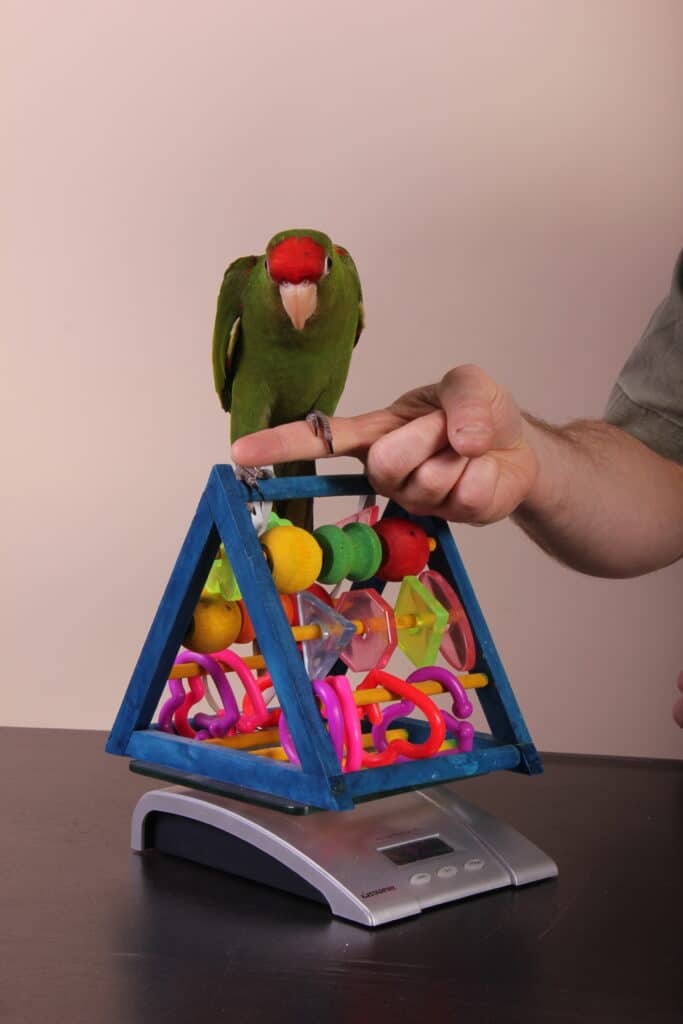
We believe the daily weighing is fundamental to ensure proper monitoring when a matured fledgling leaves for a new home. The routine learned in the earlier stages to step-out of the sleeping cage onto a scale perch to be weighed in the morning will also reassure the fledgling with a familiar activity.

For proper monitoring of the chicks throughout the Early Parrot Education stages, chick identification bands can be used to differentiate between chicks that are housed together.
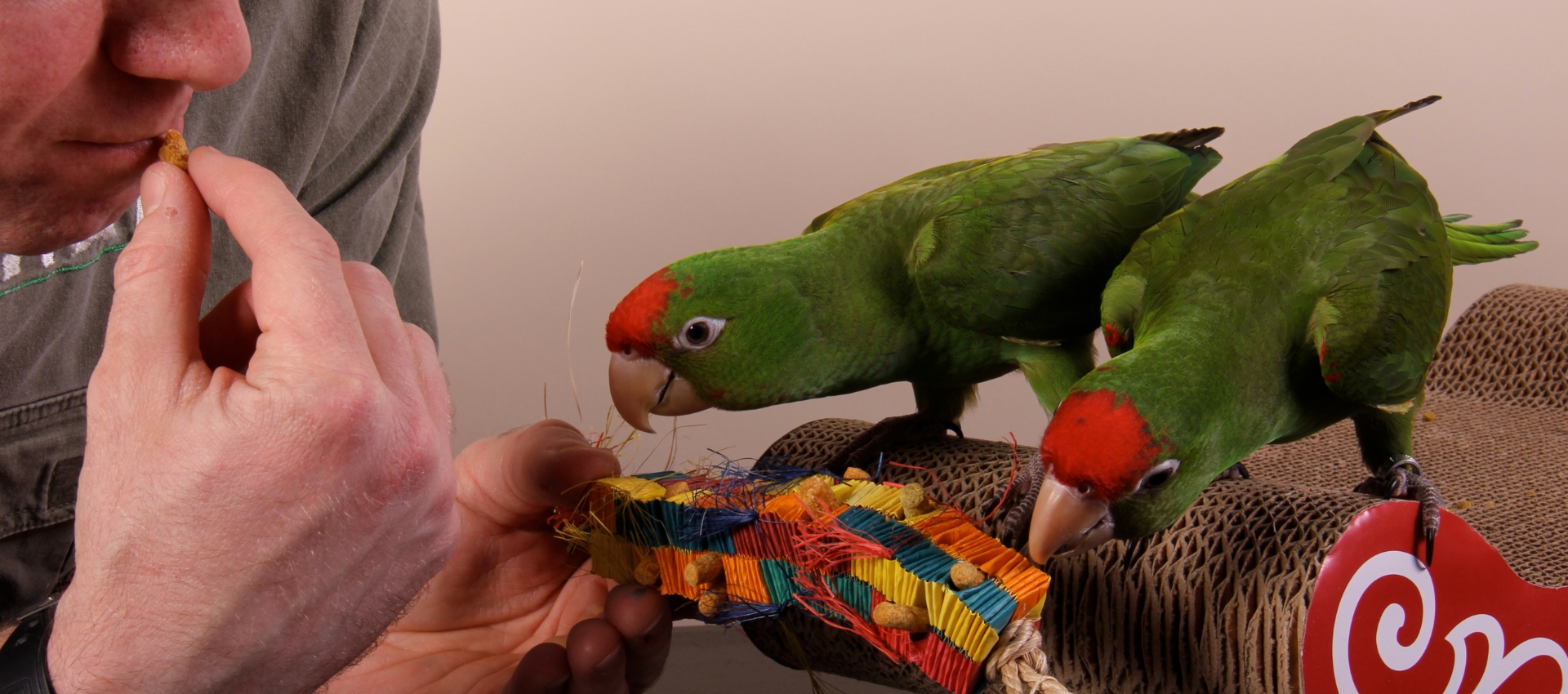
The EPE & Weaning program focuses on a young parrot’s crucial physical and mental development stages, with lessons that develop nurturing, socialization, desensitization, and play skills. Each lesson builds a foundation for more advanced material as the fledgling progresses.